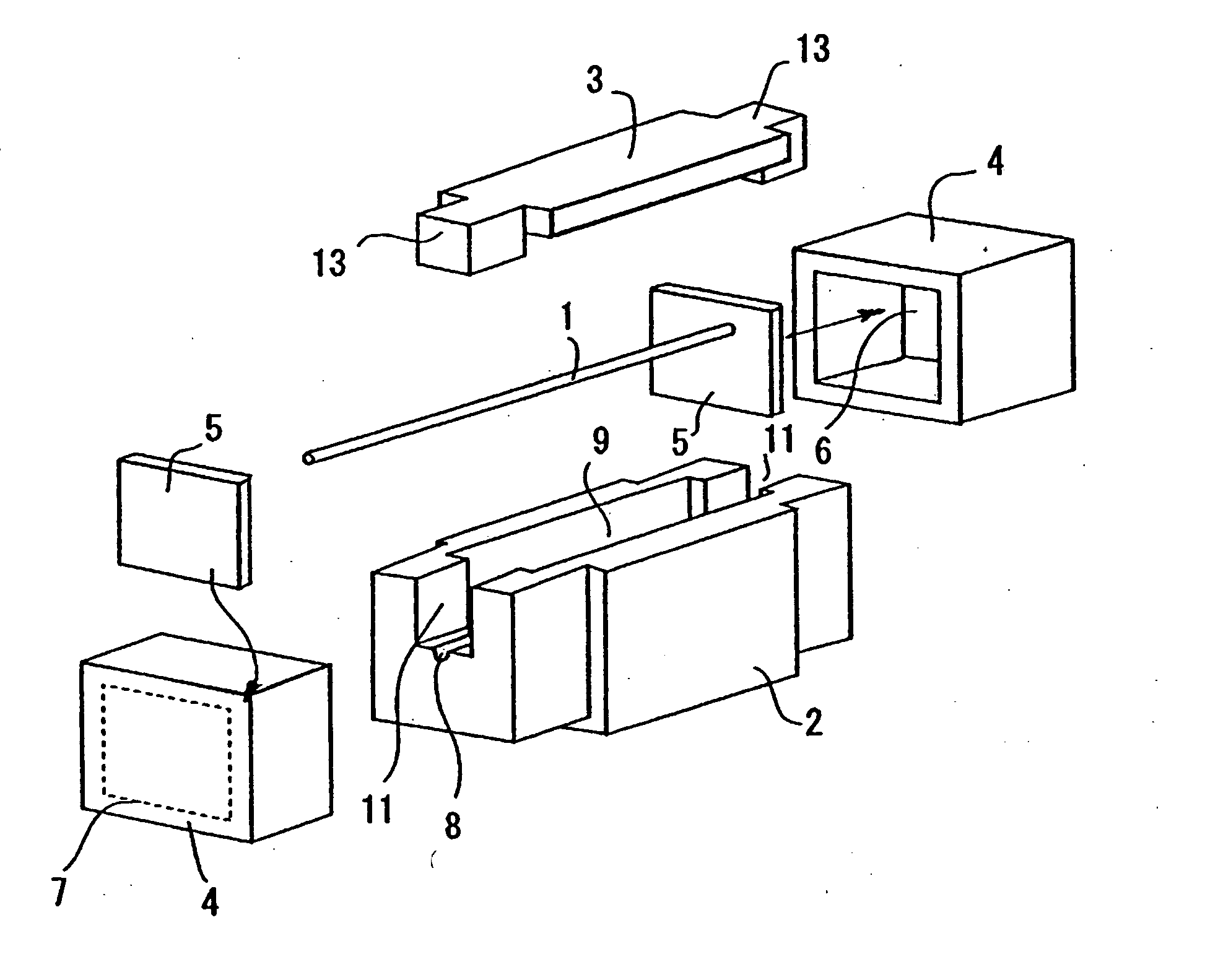Current fuse and method of making the current fuse
a current fuse and current technology, applied in the direction of circuit-breaking switches, soldering devices, manufacturing tools, etc., can solve the problems of deterioration of quality, deterioration of solderability, and harm to the human body
- Summary
- Abstract
- Description
- Claims
- Application Information
AI Technical Summary
Benefits of technology
Problems solved by technology
Method used
Image
Examples
Embodiment Construction
[0026] An embodiment of the present invention is described in detail forthwith while referencing the attached drawings. FIG. 1 is an exploded block diagram of a chip-type fuse according to the embodiment of the present invention. The chip-type fuse shown in the drawing is configured by stretching a fuse in a hollow space of a ceramic substrate. This substrate is formed by attaching a ceramic lid 3 to a ceramic casing main body 2.
[0027] At the center of the casing main body 2, an opening 9 which is opening upward is provided. At both ends of the casing main body 2, concave portions 11 communicating with that opening 9 are provided.
[0028] On the respective bottoms of the concave portions 11, a single-thread groove 8 is formed. A soluble fuse wire (fuse element) 1 is aligned with this groove 8, and stretching across the opening 9.
[0029] Note that when stretching the fuse wire 1 between the concave portions 11, a constant tension is applied to that fuse wire 1. In this case, the fuse...
PUM
| Property | Measurement | Unit |
|---|---|---|
| weight | aaaaa | aaaaa |
| temperature | aaaaa | aaaaa |
| liquid | aaaaa | aaaaa |
Abstract
Description
Claims
Application Information
 Login to View More
Login to View More - R&D
- Intellectual Property
- Life Sciences
- Materials
- Tech Scout
- Unparalleled Data Quality
- Higher Quality Content
- 60% Fewer Hallucinations
Browse by: Latest US Patents, China's latest patents, Technical Efficacy Thesaurus, Application Domain, Technology Topic, Popular Technical Reports.
© 2025 PatSnap. All rights reserved.Legal|Privacy policy|Modern Slavery Act Transparency Statement|Sitemap|About US| Contact US: help@patsnap.com



